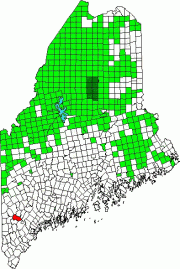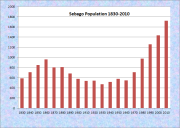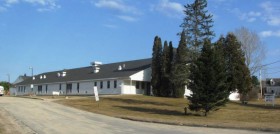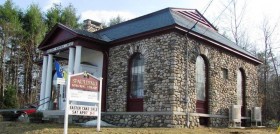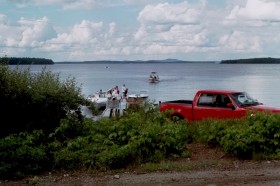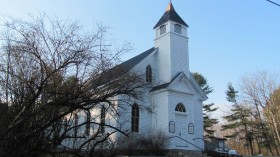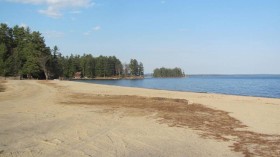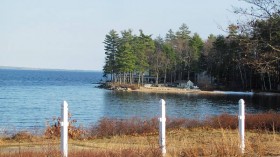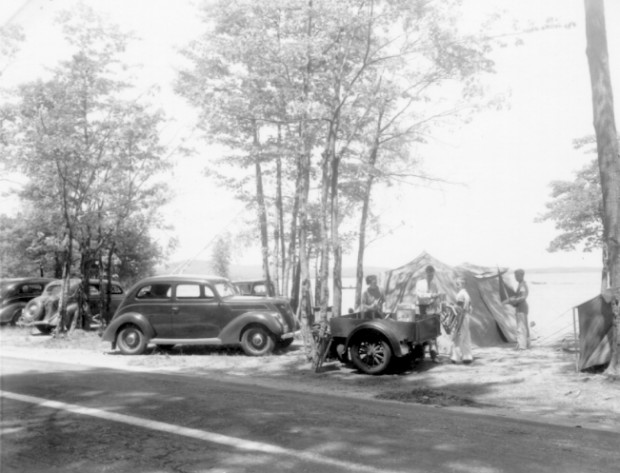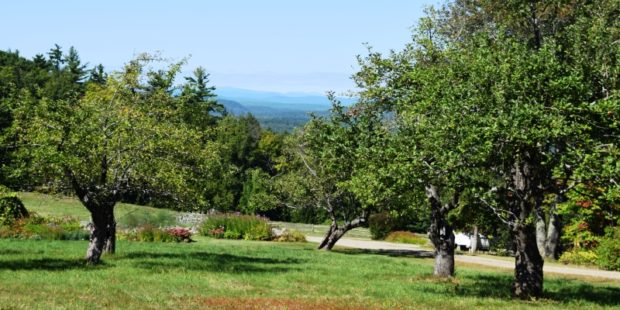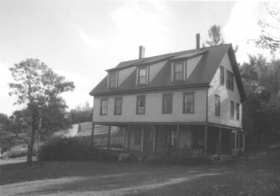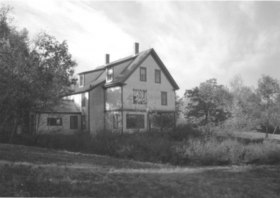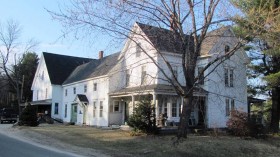| Year | Population |
|---|---|
| 1970 | 708 |
| 1980 | 974 |
| 1990 | 1,259 |
| 2000 | 1,443 |
| 2010 | 1,719 |
| Geographic Data | |
|---|---|
| N. Latitude | 43:53:39 |
| W. Longitude | 70:40:10 |
| Maine House | District 68 |
| Maine Senate | District 19 |
| Congress | District 1 |
| Area sq. mi. | (total) 46.1 |
| Area sq. mi. | (land) 32.8 |
| Population/sq.mi. | (land) 52.4 |
County: Cumberland
Total=land+water; Land=land only |
|
[seh-BAY-go] is a town in Cumberland County, incorporated on February 10, 1826 from a portion of Baldwin.
Over the years it annexed land from Baldwin (1827, 1837, 1871) and ed land to Naples (1834, 1845, 1849, 1852) and annexed land from Denmark (1830).
Several villages dot the towns landscape: North, East, and West Sebago; and Sebago Center; among others.
The village of East Sebago hosts the town’s elementary school, veterans memorial park, and public library.
The name means “great lake” or “big lake” obviously referring to Sebago Lake that dominates the town of Sebago and the several towns surrounding the Lake.
Sebago is one of several once small communities that are now rapidly growing suburbs of Portland.
Along with its substantial shoreline on the Lake, the town has its share of smaller ponds and a hiking trail to the summit of the 1392 foot Douglas Mountain, with a nature preserve that overlooks the Lake.
This popular hike is relatively short and offers spectacular views of the White Mountains and the Sebago Lake area from atop the 1,400-foot summit.
Maine Routes 11, 107 and 114 connect it with Baldwin and Standish to the south and Naples and Bridgton to the north.
Form of Government: Town Meeting-Select Board-Manager.
Additional resources
Allen, Edward S. A Late Nineteenth-Century Rural Community: Three Homesteads in Sebago, Maine. 1992. [University of Southern Maine (Portland), The Albert Brenner Glickman Family Library]
Barnes, Jack. Sebago Lake, West Shore: Standish, Baldwin, Sebago, and Naples. Charleston, SC. Arcadia Publishing. 2000. [University of Maine, Raymond H. Fogler Library, Special Collections; Maine State Library]
Centennial History of Sebago, Maine, 1826-1926: Containing the Centennial Celebration of 1926, and Historical Matter. Sebago, Me. 1926. [University of Maine, Raymond H. Fogler Library, Special Collections; Maine State Library]
The Sesqui-Centennial Chronicle, 1826-1976: Town of Sebago, Maine. Sebago, Me. 1976. [University of Maine, Raymond H. Fogler Library, Special Collections]
*United States. Department of the Interior. National Park Service. “Fitch’s General Store and House.” https://npgallery.nps.gov/pdfhost/docs/nrhp/text/95000215.PDF (accessed March 7, 2017)
National Register of Historic Places – Listings
Dyke Mountain Annex
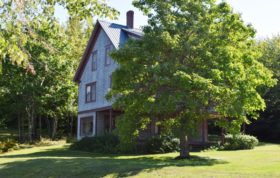
Dyke Mountain Annex (2018)
[319 Dyke Mountain Road; N43° 51′ 54.08″ W70° 42′ 35.87″] The Dyke Mountain Annex is the last tangible remains of a summer hostelry that once dominated the northern flanks of Dyke Mountain and Douglas Mountain in Sebago. Once associated with the Dyke Mountain Inn, the Annex was built in the early 20th century to provide additional accommodations for the Inn guests. After the farmhouse, barns, and ancillary structures that composed the Inn burned in 1927, a kitchen was added to the Annex, and this ordinary structure assumed the responsibility of providing lodging for tourists drawn to the hill and lakes of the Sebago area. Tin 2018 the Dyke Mountain Annex, still ran as a summer guest rental.
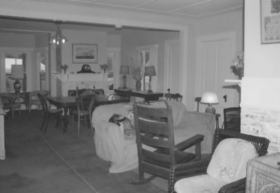 In the late 19th-century Dyke Mountain Inn evolved from the farms of Oliver and Kimball Dike, two brothers who had adjacent farm houses on the north side of the Saddleback Hills, several miles to the west of Sebago Lake. The two farms were relatively large, and contained several barns and out buildings amid cleared fields and hardwood and pine forests. In the 1886 Oliver Dike started to develop his homestead into a summer inn. Additions were built, plumbing piped, a dining room and professional kitchen installed, and a darkroom built for the ‘cameraist’ who did not want to wait to develop film at home. The Dyke Mountain Inn catered to sportsmen and fishermen, and city dwellers who desired to drink in the fresh air and clean water.
In the late 19th-century Dyke Mountain Inn evolved from the farms of Oliver and Kimball Dike, two brothers who had adjacent farm houses on the north side of the Saddleback Hills, several miles to the west of Sebago Lake. The two farms were relatively large, and contained several barns and out buildings amid cleared fields and hardwood and pine forests. In the 1886 Oliver Dike started to develop his homestead into a summer inn. Additions were built, plumbing piped, a dining room and professional kitchen installed, and a darkroom built for the ‘cameraist’ who did not want to wait to develop film at home. The Dyke Mountain Inn catered to sportsmen and fishermen, and city dwellers who desired to drink in the fresh air and clean water.
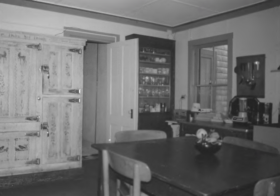 Named ‘Highland Farm’ at that time, Dike’s Inn was one of at least six lodges that had sprung up in the town. In 1906 The Town Register remarked “during the summer months a boat on the lake connects this town with the railroad station and many houses have been opened for the entertainment of summer visitors, while others have erected cottages.”
Named ‘Highland Farm’ at that time, Dike’s Inn was one of at least six lodges that had sprung up in the town. In 1906 The Town Register remarked “during the summer months a boat on the lake connects this town with the railroad station and many houses have been opened for the entertainment of summer visitors, while others have erected cottages.”
As agricultural efforts struggled to stay afloat in the 19th century, these enterprises capitalized on first the railroad and steam boat travel and later the automobile as day trippers made their way from Portland, or residents of New York and Boston journeyed north for a week or more.
Oliver Dike died in 1896 and left the business to his daughter Grace L. Dike. At some point between 1906 and 1908 G.L. Dike (as she was known professionally) changed the name to Dyke Mountain Farm reportedly because she thought it was more elegant.
In 1927 the Inn at Dyke Mountain Farm burned, along with many of its support buildings and barns. Rather than give up the business, Grace Dike moved down the road to live with her cousin in the lower farm. G. L. Dike ran the Dyke Mountain Annex until her death in 1937. In 1982 it was purchased by owners who continue to run it as a guesthouse. Even though the Annex was not as large or elegant as the Inn at Dyke Mountain, its presence on the landscape today represents a period in the recreational history of Maine when such accommodations were valued for their clean air and views rather than air conditioning and cable television.* [Christi A. Mitchell photos, 2004] The Annex was operating for lodging in 2018, while seeking a buyer.
Fitch’s General Store and House
[Long Hill Road, east side, at junction with Maine Route 114 East Sebago] This General Store and House is an unusually intact general merchandise country store and residence that had been operating in East Sebago since 1920. The business was moved to its present site after the original store, located across the street was destroyed by fire in 1919. The frame complex itself (which now houses the store) was built about 1870 as a private residence for George E. Fitch.
Fitch’s General Store and House is one of the last historic structures in the village of East Sebago. In the 1920s, it was the center of the village that contained a lumber mill, a grist mill, several dwellings, a rival general merchandise store, and a local school.
At least until 1995, the store remained as the most important commercial enterprise in the area. Beyond its interest as a representative example of a 19th century extended residential complex, this property is a remarkable survival of an early 20th century country store. It is the descendant of a family enterprise that has continued for nearly two hundred years.
William Fitch of Groton, Massachusetts first settled in the area in 1793 and soon after built a lumber mill on the Northwest River near the store. William was active in local politics, was postmaster for many years, and served in the state legislature from 1822-24. In 1850 William’s son Luther Fitch had two employees and was producing 150,000 board feet of lumber. By 1860 the Fitch lumber mill was producing 300,000 board feet a year and a grist mill was also in operation.
Like his father, Luther was involved in both local and state politics serving as selectman for Sebago for many years and being elected to the state legislature in 1871. In 1832, Luther Fitch built a store on the west side of Long Hill Road. An historic photograph shows a simple two-and-one half story frame structure with a first floor porch very similar in appearance to that found on the present store. Around 1870, Luther’s son George E. Fitch built the existing frame complex, that recently housed the store, for his residence. The business was taken over by Luther’s son George around 1885 and by his son Montford in 1909. In October of 1919, lightning struck and burned the original store. The following spring, Montford contracted for the conversion of his father’s stable into a store. In 1957, Montford’s son Laurence took over the store.*
The store was not operating in 2012.



